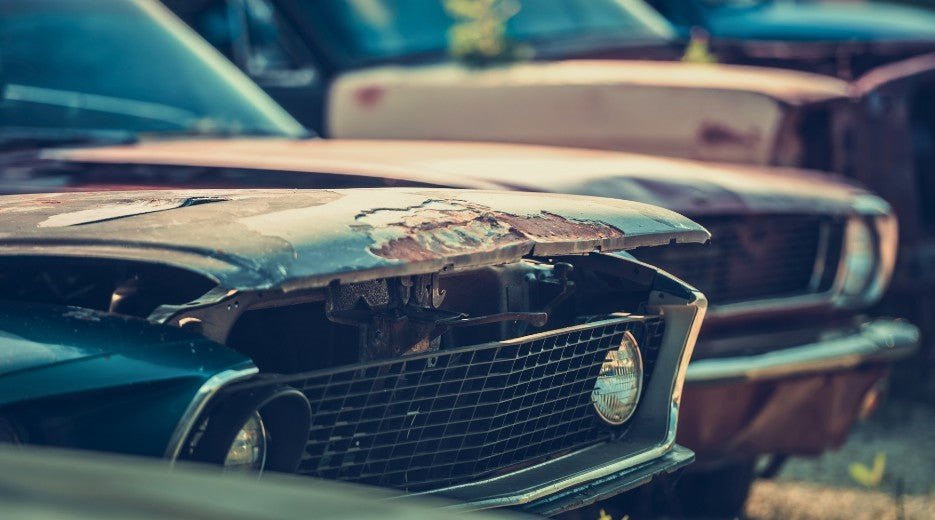Buying a parts car is one of the smartest ways to accelerate your vehicle build. While the upfront cost might seem steep compared to buying a single part, it’s an investment that pays off by providing hundreds of usable pieces for your project. Not only does this significantly reduce your cost per part, but it also saves countless hours of hunting down individual components. In short, it's a smart investment to make if you're putting together a car that needs a significant amount of work.
That said, buying a parts car isn’t without its risks. If you’re not careful, you can wind up with a worthless rust bucket taking up space on your property. Or worse yet—another project car you didn’t plan for. Every builder’s needs are unique, but with Parts Via’s helpful checklist and wide selection of parts and accessories, you’ll be equipped to find the right fit and make the most of your investment.
Is a Parts Car Right for You?
The first question to ask yourself is whether a parts car truly aligns with your project’s needs and goals. The answer depends on your build and what you intend to achieve. For example, if your project requires a significant number of factory parts to come together, a parts car can be a smart move. It’s also a great option if you frequently work on the same make and model, allowing you to stretch the value of a parts car across multiple builds.
On the other hand, if your project only needs a handful of components, a parts car might create more hassle than it’s worth. The same is true if you’re not particularly interested in sticking to factory parts—in those cases, swap meets and aftermarket suppliers may better suit your needs.
That said, there are exceptions. If you’re restoring a vehicle with little to no aftermarket support or hunting for rare components that aren’t being reproduced, a parts car could save your project. The key is to take an honest look at your goals, budget, and the specifics of your build. A realistic plan can mean the difference between a sweet new ride by spring and an unfinished New Year’s resolution gathering dust in the garage.
With that sorted, let’s dive into a parts car checklist to help you make the most informed decision.
What to Look for in a Potential Parts Car
1. A Basket Case, Not a Project
The ideal parts car is one you can dismantle guilt-free. It should be too far gone to consider as a full-on restoration project, but still valuable for its individual components. Think “parts first, car second.” An exception? A bare shell you can repurpose into a race car. Just be sure it’s something you’re excited to take apart, not tempted to rebuild.
2. The Parts You Need—Even If They’re Rough
A parts car should have what your project needs, even if those parts aren’t in mint condition. Rebuildable components are often perfectly acceptable. For example, seats with busted covers and chewed-up foam might still be worth it if the frames are solid. Driveline parts, like engines, transmissions, and differentials, are another prime example—often valuable even if they need some work.
3. Spares for the Future
Think ahead when shopping for a parts car. Spares, like an extra engine for a performance build or surplus service parts (e.g., brake calipers or master cylinders), can save you time and money down the road. While this varies from project to project, having extras on hand is never a bad thing.
4. Hard-to-Find Pieces
Don’t underestimate the value of small, easily overlooked items like door handles, switches, map lights, buttons, and levers. These pieces can be essential to your project but tricky to track down—especially for rare or vintage vehicles. While some aftermarket options can be great solutions, having access to original components ensures the best fit and finish for your build.
If your parts car doesn’t cover all your needs, Parts Via offers a wide selection of aftermarket and replacement parts to help fill the gaps. Brands like Dorman's "HELP!" line specialize in small, practical solutions for commonly replaced components, while Crown Automotive is the go-to source for reliable OEM replacement parts for Jeep vehicles. With trusted suppliers like these, you can feel confident filling in the blanks where your parts car might fall short.
5. Extras You Can Sell
The more parts your parts car has, the better. Remember, someone else somewhere is also restoring a car like yours and likely needs the parts you don't. Reselling unused components can offset your initial investment, and online marketplaces make it easier than ever to find buyers. In some cases, you might even turn a profit while outfitting your project.
Bring Your Dream Project to Life with Parts Via
There are many things a project car simply can’t or shouldn’t help you with. Consumables like tires, suspension parts, or fluids are best bought new, no matter how tempting it sounds to reuse them. You might also need professional help for more complicated tasks. That's where we come in.
Parts Via carries all the top names in service parts, with an inventory stacked with premium brands to help put any project on the road. We offer a wide range of high-performance upgrades for when you're ready to take it to the next level. Plus, we can connect you with a local installer to ensure everything gets done right.
Best of all, you can have your parts shipped for FREE to one of our 2,000+ network dealers across North America for convenient pickup and installation. So why wait? Start turning that parts car into your dream ride today with Parts Via!

